I may get commissions for purchases made through links in this post.
 Really? How To Sleep Like a Hammock Professional?
Really? How To Sleep Like a Hammock Professional?
Right now you are probably thinking, “Are you kidding me? Do I need advice on how to sleep in a hammock?“
Yes, as a matter of fact you do. That is, if you’re new to this type of sleeping. There is a right way and a wrong way. And in order to benefit optimally from hammock sleeping there are some things to take into consideration.
Sleeping in a hammock instead of a bed has some pretty neat advantages. Some will tell you there are only benefits but don’t be fooled. Every advantage has its disadvantage. The main drawback here is that hammock sleeping is not for couples.
Other problems you may encounter are easily solved
Let’s have a look at commonly perceived obstacles of hammock sleeping and how to solve them. Here are 9 tips on how to sleep in a hammock.
The secret to staying warm in a hammock
Because the hammock leaves space under you while you sleep as well as above you (assuming you’re not smashed up against a ceiling while lying in your hammock), often people find that draft causes the hammock to be a little colder.
This is especially the case for people who are using hammocks outside. The best fix to this is to put some material between you and your fine cotton web.
Just put some padding (for insulation) on the hammock. If the hammock pad isn’t enough (in addition to a sleeping bag, blankets, and sheets), you could always try just putting a sheet or buffer down the middle of the bottom of the hammock.
Usually the buffer will stop breeze flowing under the hammock and, therefore, cut down on the cold drafts that keep you up at night.
How to deal with the instable nature of hammocks or..
How a wiggly piece of cloth makes the best bed ever
One of the most heard complaints by mattress loving anti-hammockites, is that hammocks aren’t comfortable to sleep on because they move too much.
Ah, yes! The old gravity complaint. Long the bane of the water bed community, people who find movement, shall we say, problematic to a good night of rest claim that in order for one to be optimally at rest one cannot be in a state of movement.
However, recent research shows there are some unexpected benefits to this rocking motion. This, I would like to refer to as the instability paradox.
Indeed, physicists might have once agreed with this premise. Nowadays the swinging undulation provided by a hammock is actually one of its greatest benefits. The feeling of being cradled like a baby actually helps us fall asleep faster and we sleep deeper which has several benefits.
You know when, in summer, you have been floating on your air bed all day, the swinging feeling you may still have at night? Sailors have this as well and it’s called ‘sea legs’. It’s comparable with, if not actually the same as, the effect provided by the undulation of a hammock. And it’s relaxing to most of us.
So to answer the question, how to deal with instability? You probably need to get used to it. But there’s a fair chance you may like it.
Limited mobility, curse or blessing?
Sleeping in a hammock limits your mobility. This can be annoying. Especially if you are used to tossing and turning a lot you may feel like a rabbit in a purse net. You might think that you absolutely need the ability to move freely to get asleep but what if the rocking sensation makes this demand superfluous?
Moreover, this limitation may in fact be another reason you feel more rested afterwards. Anyway, considering it’s also a matter of taste, it can be a major disadvantage of hammock sleeping. Everybody’s different and some people just don’t like the trapped feeling.
See the part on claustrophobia for tips on how to increase freedom of movement.
The reason some people hurt their back
Some people find that sleeping in a hammock hurts their back. They probably don’t know about the correct way to lie in a string hammock. If you go lie in its length your body will fold up like a banana.
There’s a quick fix to avoid being draped in a U shape, with head and feet raised, and belly at the bottom of the U. You just have to position yourself diagonally. If you cross the surface with your feet on one edge and your head on the other you will lie almost flat.
How to combat claustrophobia (in a hammock)
Feeling crushed may result in an onset of “don’t bury me alive”-phobia. You may be experiencing that the sides of your hammock are squeezing you too tight towards center. This effect sometimes gives people shoulder pain and make it tough to get to sleep.
Here, the remedy is the same. Make sure to spread yourself out at an approximate 45-degree angle on the hammock and feel how much more room you have.
If, on the other hand, you’re feeling the fear of claustrophobia after you’ve been asleep for a while, one of the best solutions is to try a bigger hammock. Typically, bigger hammocks won’t dip in the middle as much. If this isn’t an option, perhaps making the hammock more taught (by either putting the posts (or trees) farther apart and thus flattening the hammock or by tying the hammock tighter to the posts (or trees)).
Afraid of falling out?
Conversely, if what you really fear is not being suffocated but falling out, just do the opposite and let that bad boy hang lower in the middle. The higher edges will provide a more secure feeling.
How to avoid cold feet and sore knees…
Often when the body is subjected to the angles, movement, and gravity associated with hammock sleeping and isn’t used to it, one could notice a pain or discomfort in their legs, a numbness upon waking, or a squeezing or pinching sensation.
Mostly this has to do with improper blood flow. By leveling the hammock as much as possible you can usually counteract blood flow problems. If this isn’t possible in your situation (maybe you just don’t have the kind of leeway with the post or tree that you’re using to overcome an angle issue) you can help relieve some of the blood flow issues with a propped up neck or leg.
Using a pillow or cushion under the affected extremity is usually a pretty effective remedy.
Why belly sleepers hate it, but shouldn’t
Sleeping on your stomach in a hammock is pretty uncomfortable. But it doesn’t mean that if you are a belly sleeper, this is not for you. Hammock sleeping is something different. Even though you sleep on your stomach in a bed you will probably lay on your back or side in a hammock.
And believe me or not but chances are you may actually like it.
If you, as a belly sleeper, suffer from lower back pain in the morning you owe it to yourself to give it a try since belly sleeping is linked to lower back pain. (the lumbar spine goes into excessive hyperextension and as a result the posterior elements of the spine are jammed together.)
Use the right hammock
Not all hammocks are suitable for overnight use. Spreader bar models for example are useless. Recommended are Brazilian, Nicaraguan, and Mayan hammocks. They help you sleep better.
What do you think? Is spending the night in a hammock something for you?


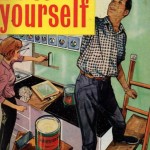



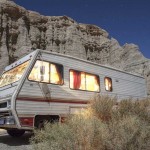




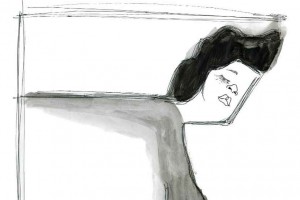

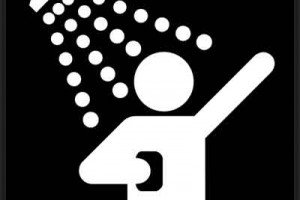
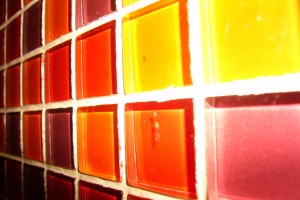









CAUTION DO NOT HAVE YOUR HAMMOCK FLAT!
You need to have a 30 deg arch in the hammock (like a banana)to lay off center and stretch out flat, by doing this you remove most if not all pressure and increase circulation for a great sleep
Here are two (2) links to help you.
http://theultimatehang.com/about-derek-hansen/
https://www.hammockforums.net/forum/forum.php
I have switched from a $700 bed to a $65 Hammock and I love it, My grand kids love sleeping in the hammock all night as well.
Note and not mentioned the key to a good night sleep is a well tuned in hammock,
I have my suspension with rings and straps for easy tuning, I also have a 0ne ring ridge line for the final tuning for a great sleep.
Smile if you want, I have been hanging around a good many years with many different hammocks,The gathered end (Burrito) sleeps the best if hung correct.
Hay I am 13 ad I want a ha ok for my room and my grandparents went to Nicaragua to spend the the moth there
And he bought a hammock there for about $20 and that in us curinice do you think it suitable for sleeping full time in?.
I’m 13 to and want a hammock in my new room (were moving)
Wich should I buy
I’ve been sleeping every night in a hammock for about 2.5 years now (vacations/travel not included). I love it as I had constant pain in my back every morning from sleeping on a regular bed. I would definitely recommend it.
Here’s what I’ve done so far, hope it helps those new to hammocks 🙂
I started with the hammock/stand combo from Walmart – about $165 Canadian currently. It comes with a storage/travel bag.
I have since upgraded to an ENO DoubleNest hammock ($90 CAD) with their wall hanging kit ( if you can’t find/get it, show the pic in a climbing store or look for “Bolt Hangers” & buy bolts/washers from a hardware store – make sure to get big enough blots to support the tension/weight you need). Walmart has a kit or you can use eye-bolts as seen on the video at https://theultimatehang.com/2013/10/30/hanging-a-hammock-indoors/
For a simple way to hang your hammock that is easily adjustable – see YouTube video
https://www.youtube.com/watch?v=1vEXC_1aaxc
The rings are called “descending/repel rings” & are available at climbing stores for about $3-5 CAD each.
I use 550 para-cord to hang my hammock between the rings & my hammock.
I currently use a small tube shaped pillow under my knees & a small inflatable camping pillow under my neck. Depending on the temperature, I have either a regular bed sheet or a blanket between me & the hammock, along with a sheet over-top of me & have a blanket draped over a ridge-line. I use the sheet as it’s easier to wash/dry then taking my hammock down and I find the sheet more comfortable than the fabric used for the hammock.
I started sleeping in a hammock this past winter, and actually fell in love so much, that I did research to find the best hammock for sleeping, at the best price, and bought a Viviere Double. I then pimped it out for myself with a covering and fleece liner, and there is a space between for a down duvet for thermal layer.
I now sleep in it every night and do not miss my bed one bit! I used to have terrible lower back pain every night/day, that I attributed to my daily grind. I’d wake up every morning, moving and stretching my lower back to get the pain out. Since sleeping in my hammock, that pain is gone! I have not felt it in months! It’s amazing!
I will not be going back to my bed. I have a place inside and out to put it, and this is how I will sleep from now on. Hammocks rock!